简体中文
繁體中文
English
Pусский
日本語
ภาษาไทย
Tiếng Việt
Bahasa Indonesia
Español
हिन्दी
Filippiiniläinen
Français
Deutsch
Português
Türkçe
한국어
العربية
The Ruble Regains 100% of Its Loss After Russia Invaded Ukraine, Why?
Abstract:Conventional wisdom on why the ruble has rallied is simply wrong.
Let's discuss the theories and what is really happening.
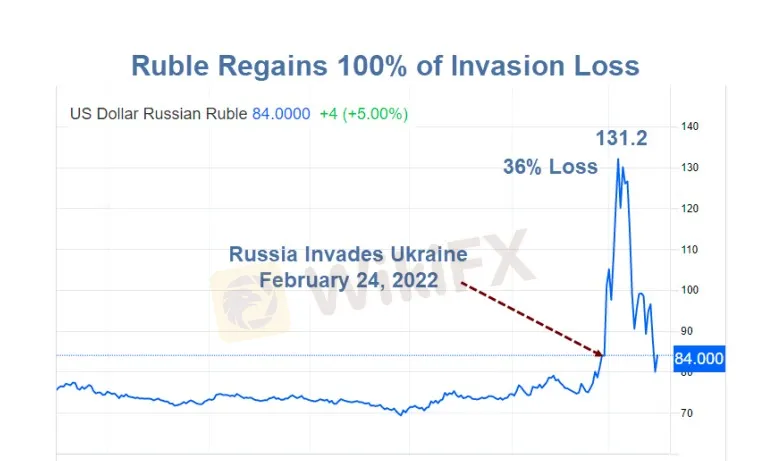
Key Points
When Russia invaded Ukraine on February 24, it took 84 rubles to buy 1 US dollar.
On March 7, it took 131.2 rubles to buy 1 US dollar.
That's a 36% decline in the rubble vs the US dollar.
The ruble is now back where it started on February 24.
Conventional Wisdom
Putin and Italy's Prime Minister, Mario Draghi, have discussed payments for gas in Russian rubles.
Weiner correctly notes the imagination.
Oil for Rubles, Who Cares?
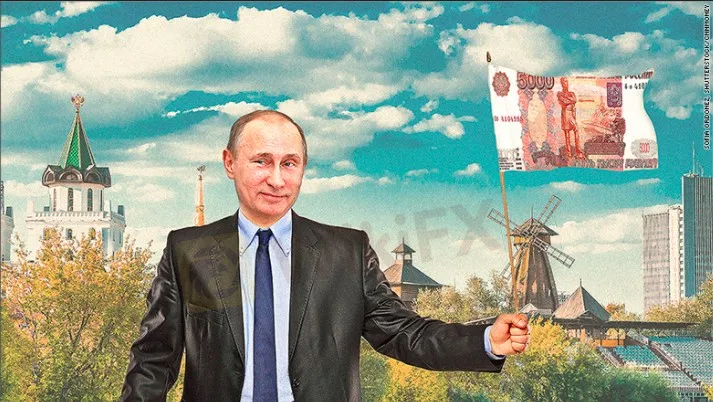
Case 1: To get rubles to buy oil, Europe sells Euros to Russia central bank. Europe immediately send the rubles it received straight back to Russia to pay for the the oil. Russia central bank accumulates euros.
Case 2: Russia sells oil for euros. Russia central bank accumulates the exact same number of Euros as in case number one.
The currency exchange takes place in seconds. Europe does not have to hold rubles to buy oil.
This is just more of the “oil priced in euros” stupidity. No one will have to hold rubles to buy Russian oil. Or gas. The Ruble does not become a reserve currency.
There is perhaps some small psychological impact, but there is no real impact unless Europe actually held ruble reserves, and here's a hint: Europe wouldn't.
What About European Sanctions?
Biden says “Ruble reduced to Rubble because of sanctions.”
It took another three days from that Tweet for the ruble to regain all of its losses. Why?
In three words: Sanctions Don't Work. Here are some examples.
Parallel Credit Card Payment System
The Wall Street Journal reports Russia Built Parallel Payments System That Escaped Western Sanctions
Visa and Mastercard pulled the plug on Russia's credit cards. But following the 2014 war in which Visa and Mastercard did the same, Russia took measures to not let that happen again.
Instead, Putin implemented a National Payment Card System—known by its Russian initials NSPK. Visa and Mastercard went along with it.
In 2015 Russia then forced the use of Mir cards based on NSPK.
Those cards do not use the US payment system.
One irony is that instead of Visa and Mastercard getting the fees, Russia's central bank collected 8.2 billion rubles in net profit, or about $94 million at current exchange rates.
Russia actually profited from Visa and Mastercard sanctions.
Disclaimer:
The views in this article only represent the author's personal views, and do not constitute investment advice on this platform. This platform does not guarantee the accuracy, completeness and timeliness of the information in the article, and will not be liable for any loss caused by the use of or reliance on the information in the article.
Read more
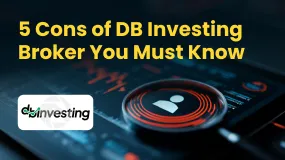
5 Cons of DB Investing Broker You Must Know
It's always advisable to read online review articles about forex brokers you are thinking to Invest your money with. The forex market has become increasingly unsafe due to the rise of fraudulent brokers. Review articles help you spot scam brokers and protect your money. Read this important article about DB Investing to stay fraud alert.
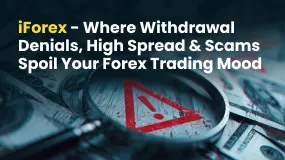
iForex - Where Withdrawal Denials, High Spread & Scams Spoil Your Forex Trading Mood
Are high spreads charged by iForex disallowing you to make profits? Do you feel that you will never be able to withdraw from iForex? It's nothing new! Read this exposure story where we have highlighted complaints from several investors.
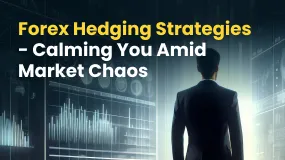
Forex Hedging Strategies - Calming You Amid Market Chaos
Finding it hard to deal with the forex market volatility? Do those ups and downs in currency pair prices make you more nervous or worried? You need the right forex hedging strategies. As a concept, forex hedging is about strategically opening additional positions to stay immune against adverse forex price movements. It’s about offsetting or balancing your current positions by buying or selling financial instruments. As a trader, your risk exposure is reduced, hence limiting your potential losses.
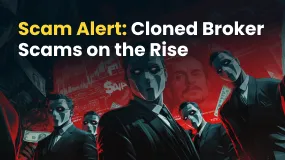
Scam Alert: Cloned Broker Scams on the Rise
Reputed authorities like the FCA have issued warnings against brokers who act genuine but are actually fake brokers. They copy details such as logos, names, branding, and sometimes even employee appearances to trick investors and steal money from them.
WikiFX Broker
Latest News
What Is Forex Currency Trading? Explained Simply
LSEG Announces £1 Billion Share Buyback Program
Ultima Markets enters the UK and gains the FCA license
SEC Lawsuit Targets Real Estate Fraud Scheme by Joseph Nantomah
A Beginner’s Guide to Trading Forex During News Releases
Forex Hedging Strategies - Calming You Amid Market Chaos
ASIC Regulated Forex Brokers: Why Licensing Still Matters in 2025
SkyLine Judge Community: Appreciation Dinner Successfully Held in Malaysia
Think Uncle Sam Owes $37 Trillion? It's Far Worse Than That
iForex - Where Withdrawal Denials, High Spread & Scams Spoil Your Forex Trading Mood
Currency Calculator


